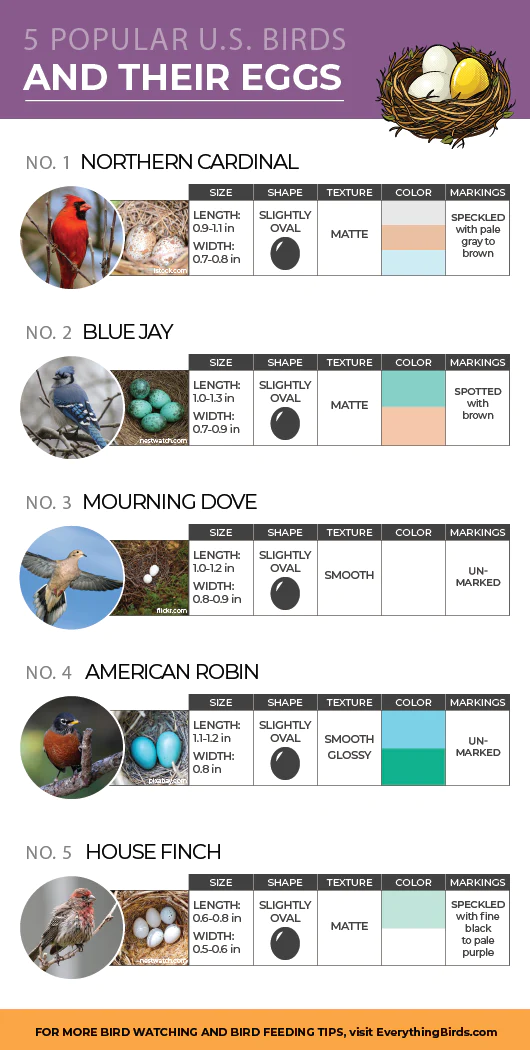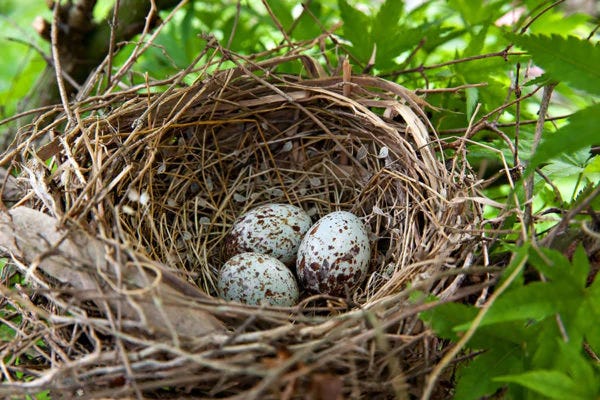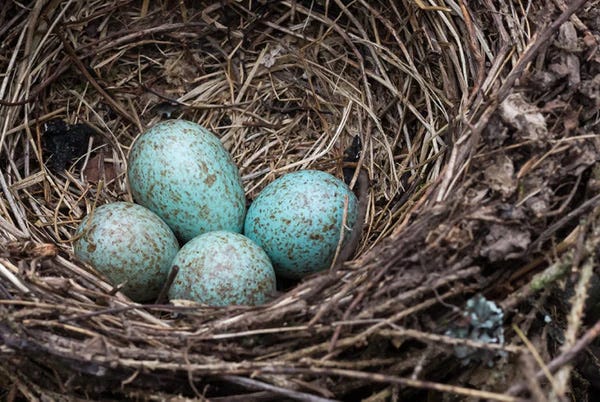
While growing up, I lived in a wooded area and I was forever bringing home the shells of empty bird eggs. Occasionally, I'd find an empty nest and bring that home, too. Of course, I was always asking, “What kind of bird was it?”
It didn't matter what it really was; my mom would always say it belonged to a robin.
And that was good enough for me.
What to Notice When You See a Wild Bird Egg
Before moving on to characteristics that can help you identify the owners of different bird eggs, a few words of caution:
- Don't ever disturb a nest with eggs or a brooding parent. It's illegal to disturb an active nest if it belongs to a native species. And a stressed parent may be so wigged out that they abandon the nest, leaving its chicks to die.
- If you find an egg on the ground, don't assume it's fallen out of a nest. By all means, look around to see if you can locate the nest it may have fallen out of and replace it carefully, but some birds intentionally lay their eggs in scrapes on the ground. The eggs of ground nests will have markings that camouflage them well.
The easiest way to identify a type of bird's egg is to consult a field guide. I prefer ones with photographs rather than drawings. For me, they're more realistic and show natural variations. But, in the absence of such a resource, look to these clues and then confirm with a guide.

Size
To determine the size of an egg, it's helpful to compare it to another object. I've seen several charts that use a U.S. dime as a point of comparison, probably because so many wild backyard birds have small eggs. A hummingbird's egg, for example, is no bigger than a coffee bean, while a robin's egg might be considered as large as a quarter.
Shape
We're all familiar with the shape of a chicken egg, but the eggs of wild birds don't very much resemble a chicken's egg. And across species, they look different too. Is your egg more round or oval? Does it have a pointed end or is it more uniform in shape? Is the egg narrow or wide?

Texture
The surface of eggs laid by wild backyard birds have a remarkably wide variety of textures. Many of them are smooth, but just as many can be covered in tiny dimples or feel pebbly. Some wild backyard bird eggs have ridges and ripples. Eggs can also be glossy or have a duller, matte finish.
For fun, the next time you go shopping for wall paint, notice how the texture or finish of the paint reflect the texture of eggs—glossy, matte, and eggshell.
Color
Color and the next characteristic, markings, go a long way in helping to identify eggs. You'll want to make note of the general base color (white, brown, beige, etc.), if the color is uniform across the entire egg, if the color is pale or bold, and whether there are variations in the hue.

Markings
Like color, the markings on an egg vary across species. Likewise, the types of markings you may find can be numerous. For proper identification you'll want to be able to distinguish among spots, speckles, and splotches. Determine their color and whether they are scattered or concentrated at one end or perhaps in a band.
Beyond the egg, you can record other clues to help with its identification. You could keep track of what the nest looks like, where it is, what it's made of, and how many eggs are in the nest (remembering not to disturb the nest or parents).
See also: Please Don't Give Birds These Nesting Materials






